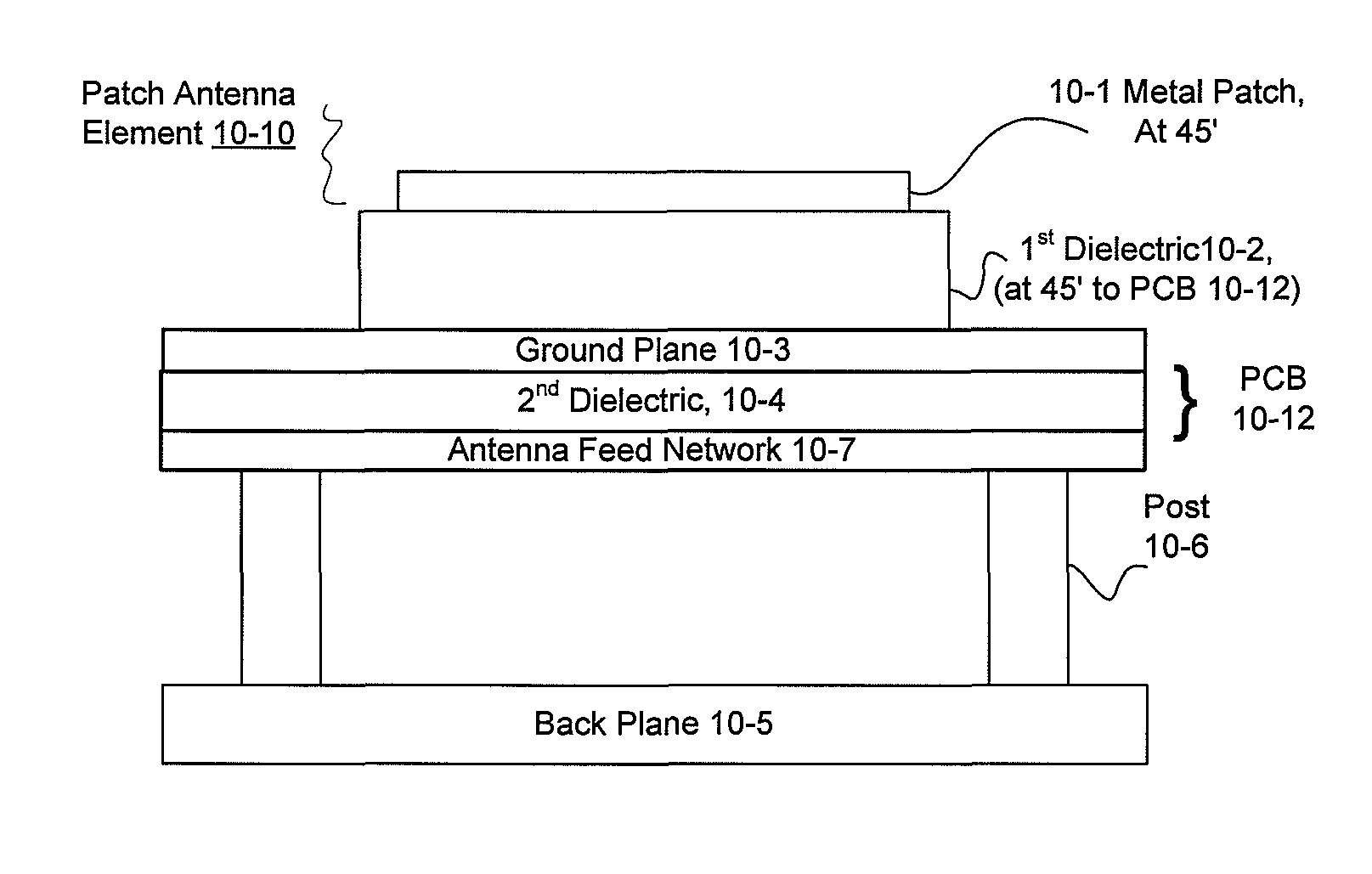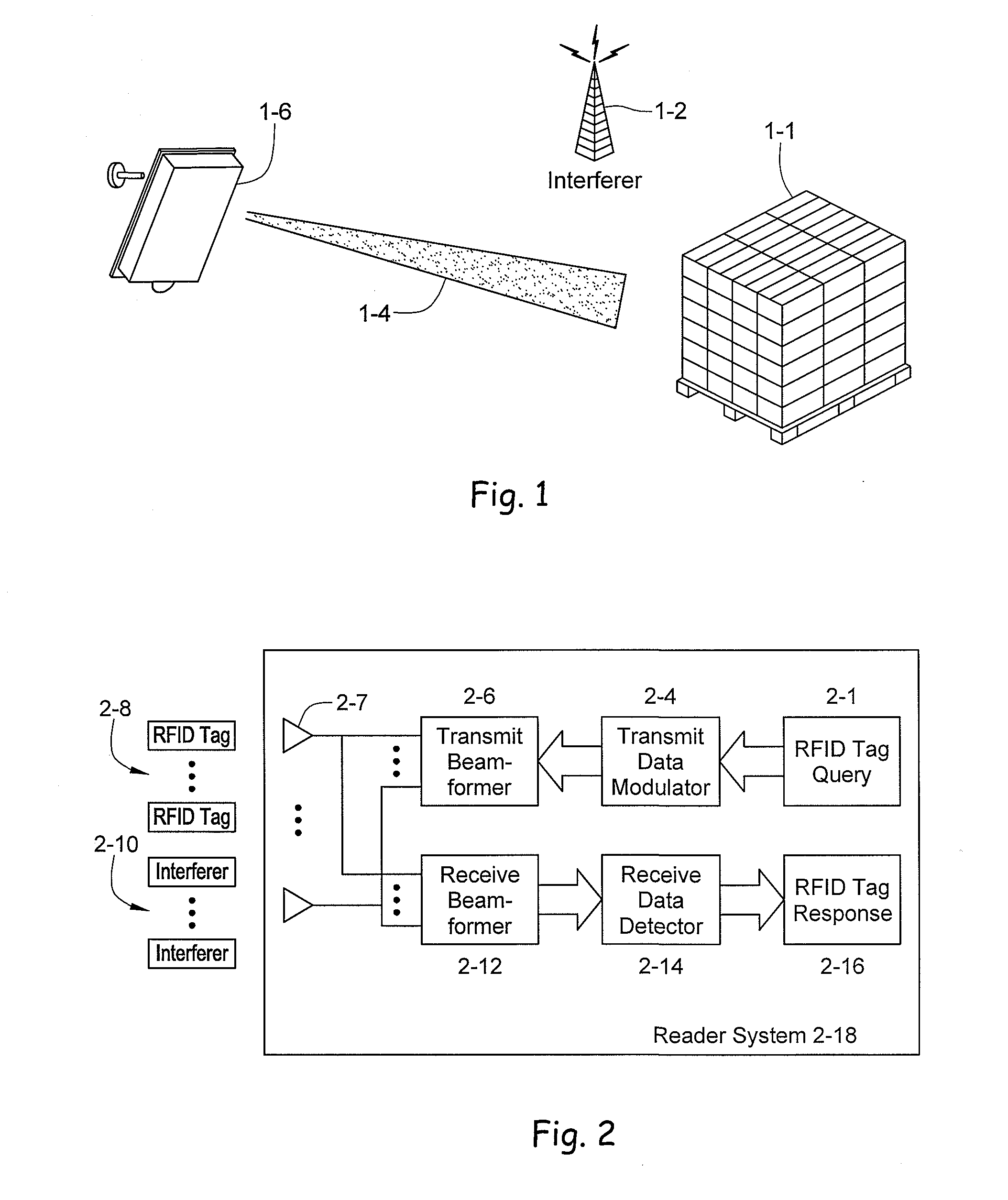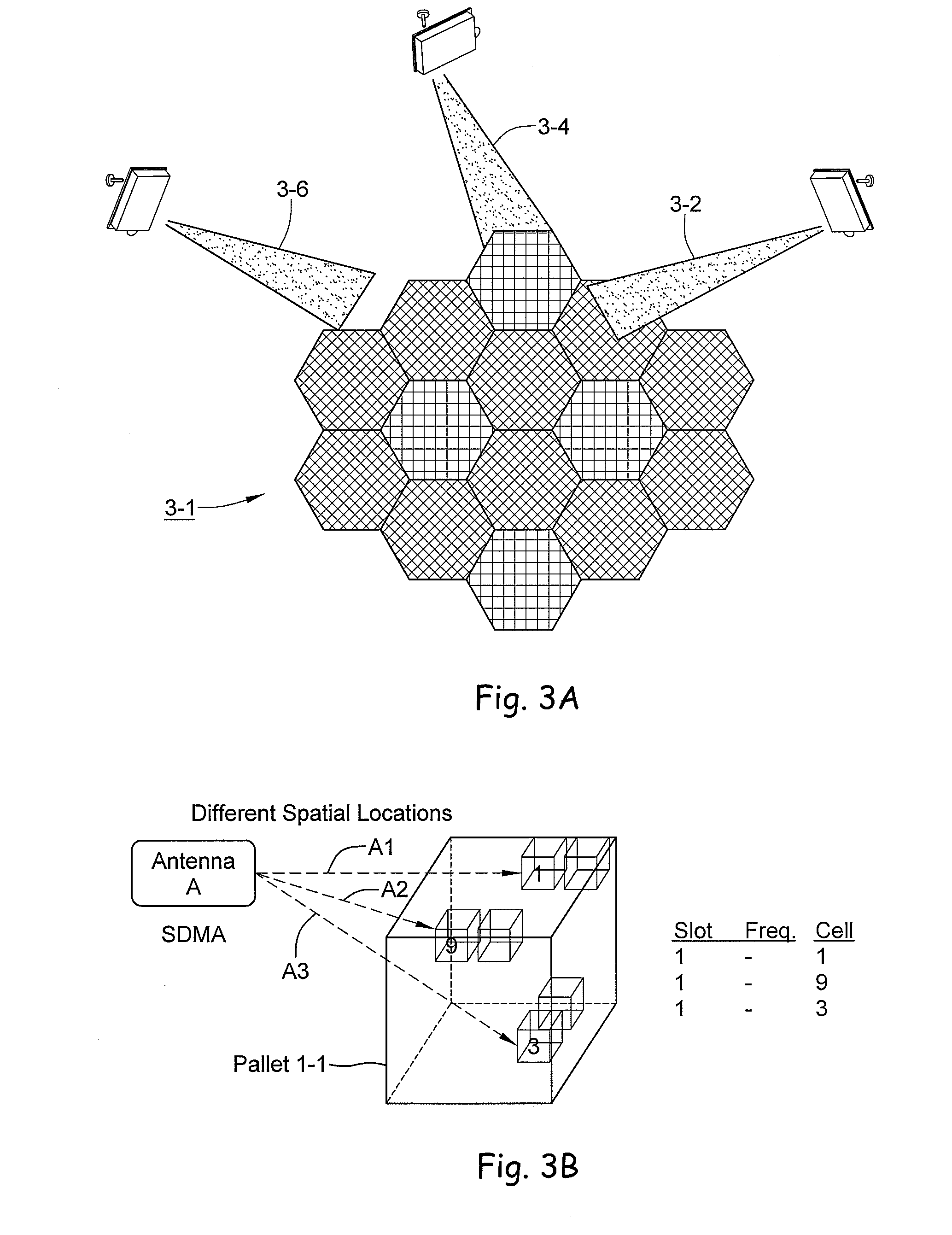RFID antenna system
a technology of rfid antennas and antenna earthings, which is applied in the direction of antenna earthings, substantially flat resonant elements, and resonant antennas, etc., can solve the problems of limited transmission distances available with conventional rfid systems, limiting their use in an automated factory setting, indoor wireless environment, and/or low reliability of systems
- Summary
- Abstract
- Description
- Claims
- Application Information
AI Technical Summary
Benefits of technology
Problems solved by technology
Method used
Image
Examples
Embodiment Construction
[0054] A radio frequency identification system reader is disclosed employing an antenna array. In the forward channel, that is the transmission path between the reader and the tag, the transmit antenna array may be distributed across several physical arrays. In the case of a distributed transmit antenna, the receive antenna array may capture the impinging energy from the tag signal excited by the antenna elements of a distributed array. This approach may use spatial multiplexing to provide substantial bandwidth utilization improvements over single antenna systems. The antenna array may support multiple frequency bands. An exemplar array element design includes an aperture-coupled feed tiled patch antenna. The tiled construction includes a matrix of identical elements in a two-dimensional plane. A low-noise amplifier (LNA) may be embedded in the antenna element itself to enhance the overall performance of the system.
[0055] For cases in which a transmit array antenna is used, beam fo...
PUM
 Login to View More
Login to View More Abstract
Description
Claims
Application Information
 Login to View More
Login to View More - R&D
- Intellectual Property
- Life Sciences
- Materials
- Tech Scout
- Unparalleled Data Quality
- Higher Quality Content
- 60% Fewer Hallucinations
Browse by: Latest US Patents, China's latest patents, Technical Efficacy Thesaurus, Application Domain, Technology Topic, Popular Technical Reports.
© 2025 PatSnap. All rights reserved.Legal|Privacy policy|Modern Slavery Act Transparency Statement|Sitemap|About US| Contact US: help@patsnap.com



